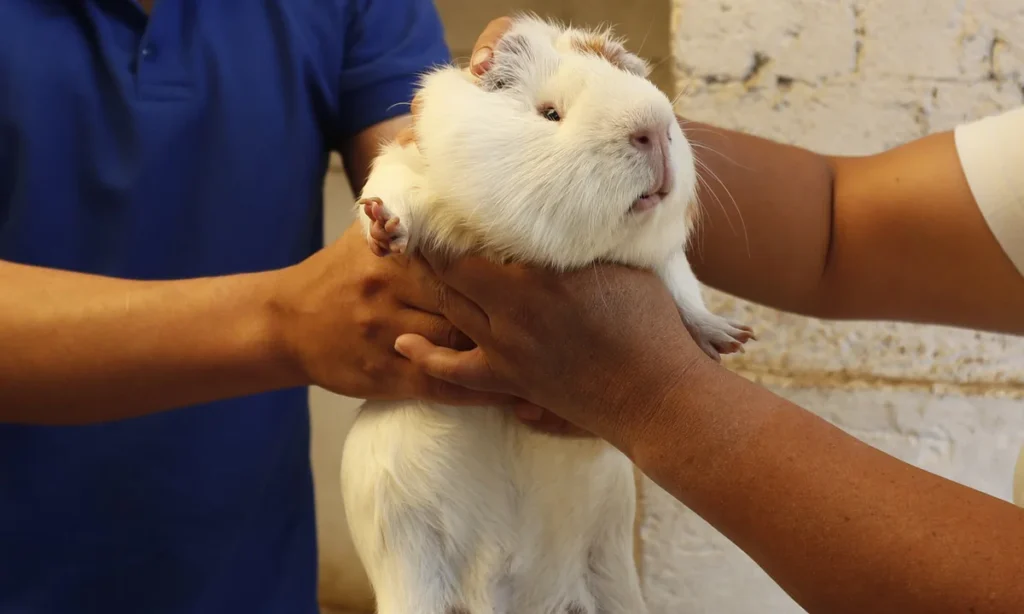LIMA (AP) — Peru on Thursday celebrated two decades since the creation of a genetically modified breed of guinea pig, a rodent whose meat has formed a part of the diet of people in the Andean nation for thousands of years.
The genetically modified breed of guinea pig — known as cuy locally — is called “Peru.” It was created in 2004 at the National Institute of Agrarian Innovation, Juan Solórzano, a research zootechnician, said in the middle of one of the institute’s farms where thousands of guinea pigs are raised for study.
What characterizes the “Peru” breed is that grows faster, reaching a weight of 1 kilogram in 56 days, rather than the 160 days that was needed before, Solórzano said.
“It is a precocious breed,” said Solórzano.
Peru Guinea Pigs are bred at an agricultural research farm for distribution to farms across the country, in Lima, Peru, Thursday, Oct. 3, 2024. Peruvian guinea pigs, locally known as ‘cuy,’ have been traditionally raised for meat consumption since pre-Inca times. (AP Photo/Guadalupe Pardo)
Guinea pigs are native to the Andes Mountains and are raised in Peru, Bolivia, Ecuador and Colombia, areas where the Inca Empire spread almost 500 years ago.
There are more than 25 million guinea pigs in Peru, according to official figures. The rodent is so popular in the South American country that authorities have decreed the second Friday of October as National Guinea Pig Day to encourage its consumption.
Internal migration from Peru’s Andes in the 20th century brought the custom of eating guinea pigs to the country’s Pacific coast.
“It is eaten at sporting events or religious festivals. Guinea pig is a festive dish,” Solórzano said. It is also used in ritual healing practices by being rubbed over the body of a sick person.
Costumers eat guinea pig at a restaurant in Lima, Peru, Thursday, Oct. 3, 2024. Guinea pigs, locally known as ‘cuy,’ have been traditionally raised for meat consumption since pre-Inca times. (AP Photo/Guadalupe Pardo)
Marina Isabel Briceño, an employee at an air conditioning supply company, said she has eaten guinea pigs since she was a child, calling them a delicacy served at “special events.”
Born in the Cajamarca region, Briceño said that at baptisms the parents often give the godfather and godmother a tray with more than a dozen guinea pigs that have been fried and are “crispy and ready to eat.”
“I know it is a rodent, a distant relative of rats, but those animals eat garbage, whereas guinea pigs eat something else, tender corn leaves which is why they are tasty,” she said.
A guinea pig dish is ready to be served to a customer at a restaurant in Lima, Peru, Thursday, Oct. 3, 2024. Guinea pigs, locally known as ‘cuy,’ have been traditionally raised for meat consumption since pre-Inca times. (AP Photo/Guadalupe Pardo)

